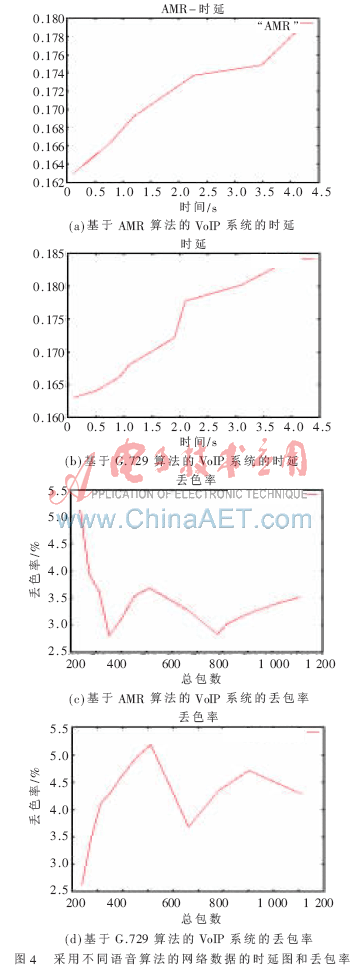1 NS-2 and AMR related technologies
1.1 NS-2 Network Simulator NS-2 (Network Simulator, version 2) is an object-oriented, discrete event-driven network simulator developed by the University of California, Berkeley. It is mainly used to solve network research problems. At present, NS- 2 can be used to simulate a variety of different communication networks. It has powerful functions and rich modules. The main modules that have been implemented are: network transmission protocols (such as TCP and UDP), service source traffic generators (such as FTP, Telnet, Web, CBR and VBR), and routing queue management mechanisms (such as Droptail, FQ, RED and CBQ), routing algorithms (such as Dijkstra), wireless network WLAN, mobile IP, satellite communication network modules, multicast protocols, and some MAC sublayer protocols, etc.
NS-2 uses a development mechanism called split object model, using C ++ and OTcl two development languages ​​for development, and uses TclCL for automatic connection and mapping between them. The simulation of NS-2 can be divided into 2 levels, the first level is based on OTcl simulation, mainly using NS-2 existing network elements to achieve the simulation, so no need to make any modifications to NS-2 itself, only need It is enough to write a complete OTcl script program; the other level is based on C ++ and OTcl simulation. There is no required network element in this level, so NS-2 needs to be expanded to add the required network element. Generally speaking, the simulation of NS-2 needs to be used in conjunction with Nam ﹙Network animater﹚. Nam is an animation demonstration tool based on Tcl / Tk to present the simulation process in a visual way [2].
1.2 Introduction of AMR adaptive technology Adaptive multi-rate speech coding (AMR) has 8 source coding modes, 2 channel modes (that is, full-rate channel mode and half-rate channel mode) and different channels corresponding to different channel modes Encoding mode. Among them, there are 8 corresponding channel coding modes in the full-rate channel mode, and 6 corresponding channel coding modes in the half-rate channel mode. Each channel coding mode has a source coding mode corresponding to it. In addition, in order to reduce the complexity of the algorithm, the eight source coding modes all use ACELP (Algebraic Code Excited Linear PredicTIon) model, the only difference is the parameter quantization codebook and quantization bit number. In mobile communications, when the channel mode is fixed, the current channel quality is estimated by measuring the normalized carrier (carrier signal) to interference (interference signal) ratio. The measurement level is 4 levels, which are very poor, poor, and good. ,well. If the current channel quality is estimated to be good or good, reduce the channel coding rate and increase the source coding rate to improve the reconstructed voice quality; if the current channel quality is estimated to be poor or poor, increase the channel coding rate 3. Reduce the source coding rate to ensure the quality of the call. Therefore, the source coding in high mode (such as MR122), although it can provide excellent speech intelligibility and naturalness, but the noise resistance is poor; while the source coding in low mode (such as MR475), because most bits are used As channel coding, it has a strong error correction capability, but the reconstructed voice quality is not good [3].
2 VoIP system under AMR algorithm The basic process of VoIP transmission can be divided into 4 types: PC-PC model, PC-Phone model, Phone-PC model and Phone-Phone model [4]. The phone-phone model simulated in this article is shown in Figure 1. In this model, the transmission process of voice can be split into two stages. In the first stage, voice data is packaged through the UDP protocol and sent from the source point pc0-T, forwarded through the gateways gk0 and gk1, and the voice data packet is forwarded to the destination point pc0-R, thereby realizing the voice data between nodes 0 ~ 5 Communication; in the second stage, voice data is packaged through the UDP protocol and sent from the source point pc1-T, forwarded through the gateways gk1 and gk0, and the voice data packet is forwarded to the destination point pc1-R, thereby achieving the node 6 ~ 1 Voice data communication. The two-stage continuous transmission process constitutes the basic transmission process of voice data in VoIP. In addition, in order to more realistically simulate changes in network resources, a PC-to-PC network data volume transmission process is set up. The process is: the network data is packaged through the TCP protocol and sent from the source point pc2-T, forwarded through the gateways gk0 and gk1, and the network data packet is forwarded to the destination point pc2-R, so as to realize the network data between nodes 2 ~ 7 transmission. By setting different network data flows, the quality of the current network channel can be simulated to prepare for the selection of different AMR source coding modes.

In order to detect the performance of the new VoIP system under network congestion, some parameters of the aforementioned voice model need to be adjusted: (1) Transmission bandwidth setting of the public switched network (PSTN). The link between nodes 0 ~ 3 is used to simulate PSTN, and the maximum voice transmission rate (lossless voice coding scheme G.711) in PSTN is 64 Kb / s, so in order to reflect the preciousness of bandwidth resources, set this The transmission bandwidth of the link is 64 Kb. Similarly, the transmission bandwidth between nodes 1 to 3, 5 to 4 and 6 to 4 is also set to 64 Kb; (2) Internet bandwidth setting . The links between nodes 3 ~ 4 are used to simulate the Internet network. Due to the large amount of data transmitted in the Internet network, the transmission bandwidth allocated to each user is limited, so in order to reflect the limited network bandwidth Set the transmission bandwidth of this link to 1 Mb. Similarly, the transmission bandwidth between nodes 2 ~ 3 and nodes 4 ~ 7 is also set to 1 Mb; (3) The measurement of the current network channel quality. In order to measure the current network channel quality, parameters that measure the performance of the VoIP system, such as delay, jitter, and packet loss rate, are selected as the parameters that measure the current channel quality. In this experiment, the voice data packet loss rate within a certain period of time is selected. The calculation formula is: λ = Sd / SRTT, where Sd is the number of lost voice packets in a fixed time, and SRTT is sent in a fixed time Number of voice packets [4]; (4) AMR source coding mode selection. Since AMR has 8 source coding modes, and the 8 source coding modes are all based on the ACELP model, the MOS values ​​of the reconstructed speech in each mode are not much different, but the total code amount of AMR is very large, so the comprehensive Measured, three of them can be adaptively selected according to different voice packet loss rates, namely: MR122, MR74, MR475 [3]. The selection criteria are: when λ≤1%, select MR122 mode; when 1% <λ≤3%, select MR74 mode; when λ> 3%, select MR475 mode; the initial source coding mode is MR122.
3 Experimental results and analysis The operation of the new VoIP system under the NS-2 platform is shown in Figure 2. In this operating model, the amount of traffic between nodes 2-7 represents the status of the links between gateway nodes 3-4. That is, when the network data transmitted between nodes 2 ~ 7 is large (> 1 Mb), the link between nodes 3 ~ 4 is considered to be congested; when the amount of data transmitted between nodes 2 ~ 7 is small (<1 Mb), it is considered that there will be no congestion. Nodes 0 ~ 6 are the sending nodes of voice data packets, and have the function of adaptively adjusting the voice sending rate according to the network quality, where the initial sending rate is 12.2 Kb / s; the sending of data packets is distributed with the Pareto distribution of NS-2 Traffic generator, which mainly considers the impact of voice activation detection technology (VAD) on IP voice [2].

In addition, in order to analyze the experimental data more conveniently and effectively, the above VoIP model needs to be simplified, and the simplified VoIP transmission model is shown in FIG. 3. Node 2 is a gateway, node 3 is both a gateway and a receiving node for all network data; node 0 is a sending node for voice data packets, and node 1 is a sending node for network data volume.

Figure 4 is a graph of delay and packet loss rate of network data using different voice algorithms.

According to the experimental results, the new VoIP system under network congestion is superior to the G.729-based VoIP system in terms of delay and packet loss rate. Therefore, the new VoIP system is better than the original in the reconstructed IP voice MOS value The system has more QoS guarantee performance.
Among them, in terms of network delay, both are basically in the rising stage, but their maximum value does not exceed 250 ms (the maximum delay requirement for real-time voice transmission). In addition, because the new VoIP system adopts an adaptive mechanism, the former tends not to be as fast as the latter in the upward trend, and the delay time as a whole is smaller than the latter, as shown in Figure 4 (a) and Figure 4 (b) As shown.
In terms of packet loss rate, both of them show a wavy development trend with the increase of data packets. Among them, the packet loss rate of the VoIP system based on the G.729 algorithm will stabilize at about 4% as a whole, as shown in Figure 4 (d). The new VoIP system based on the AMR algorithm uses an adaptive mechanism, which can adjust the transmission rate adaptively as the channel quality changes, but because the initial rate is MR122 mode, this makes the first packet loss The rate is relatively large, and then the adaptive mechanism is adopted to reduce the transmission rate of the source, which alleviates the network congestion to a certain extent, thereby reducing the packet loss rate. However, when the packet loss rate is less than 3%, due to the use of MR74 mode, the packet loss rate has an upward trend again, but it quickly fell back, and will eventually remain at about 3%, as shown in Figure 4 (c) shown.
This article introduces a new VoIP system based on the AMR algorithm. The system can adaptively adjust the sending rate of the sender according to the quality of the network channel. Experimental results prove that the new system is superior to the traditional VoIP system in network delay and packet loss rate. Therefore, the new system can better guarantee the reconstructed voice quality under the condition of network congestion, and has good application prospects.
Chlorinated Polyethylene Tape is also called CPE tape.
CPE plastic bag, it is made of high density polyethylene (HDPE) by chlorination substitution reaction of polymer material, not high temperature resistance, according to the structure and use of different, chlorinated polyethylene can be divided into resin chlorinated polyethylene (CPE) and elastic type of chlorinated polyethylene (CM) two categories. Thermoplastic resin can be used alone, but also with polyvinyl chloride (PVC), polyethylene (PE), polypropylene (PP), polystyrene (PS), ABS and other resins and even polyurethane (PU) blends.
CPE plastic bag, it is made of high density polyethylene (HDPE) by chlorination substitution reaction of polymer material, high temperature resistance.
It is translucent milky white, is made of high density polyethylene by chlorination substitution reaction of polymer material, feel more soft, not easy to deformation, aging resistance, not easy to wear.
Waterproof Electrical Tape HB1505 is a kind of Chlorinated Polyethylene Tape whitch has double layer,made from elasticity insulation materials and waterproof mastic.Overload temperature can reach 100℃ max.
Together with other Electrical Tapes,Special Adhesiveand and Insulating Tape,become our best-selling products.
Chlorinated Polyethylene Tape,Water Proof Tape,Waterproof Electrical Tape,Waterproof Sealing Tape
CAS Applied Chemistry Materials Co.,Ltd. , https://www.casac1997.com